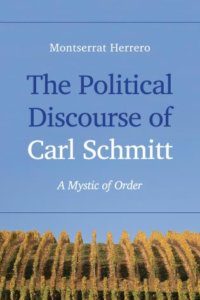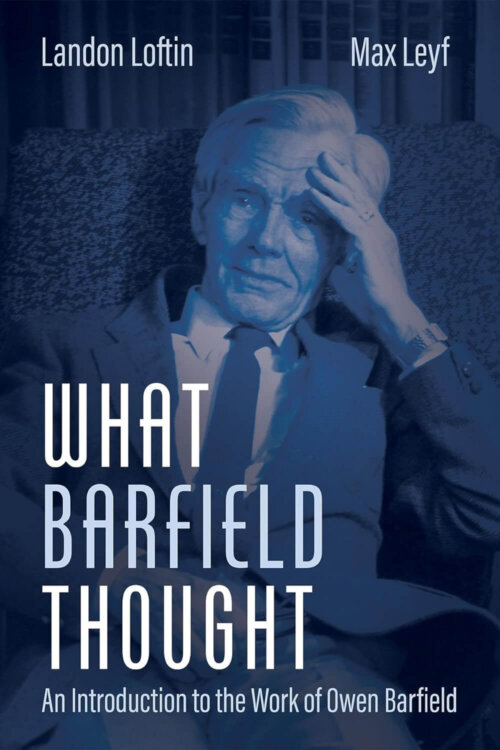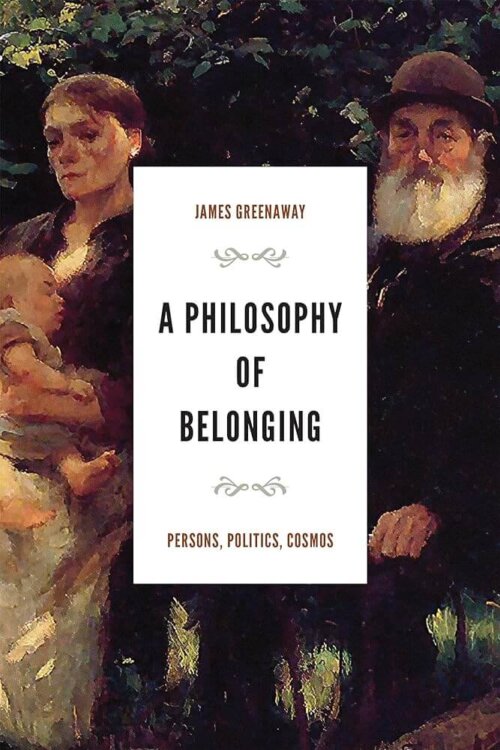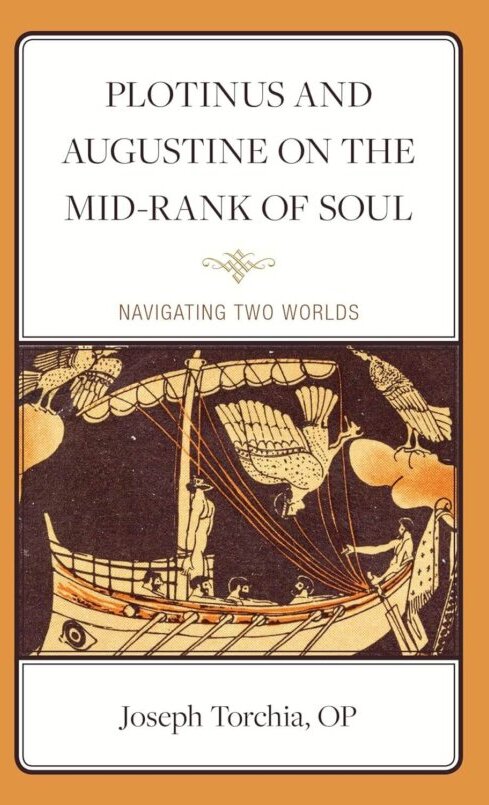The Political Discourse of Carl Schmitt: A Mystic of Order

The Political Discourse of Carl Schmitt: A Mystic of Order. Montserrat Herrero. London: Rowman & Littlefield, 2015.
Montserrat Herrero is Associate Professor of Political Philosophy at the University of Navarra, Spain. In the vast and growing scholarship about Carl Schmitt, Herrero’s book provides a new and insightful interpretation of his political theory and her book is an essential source for all students of Schmitt as well as other scholars interested in political theology. Schmitt remains one of the most controversial political theorists of the twentieth century and his interpretation of political theory continues to be a matter of scholarly debate. In her book, she finds in Schmitt’s idea of nomos the unifying concept for his political discourse. Beginning with Schmitt’s latter works, Herrero proposes a “reverse genealogy” by analyzing his early concepts such as “friend-enemy distinction”, “exception”, as well as “political theology” in the light of his later work, The Nomos of the Earth (1950).
The first chapter provides a brief and thoughtful bibliographical sketch of Schmitt’s personal, intellectual, and political life. A devoted Catholic during his youth, he became a prominent jurist in the Weimar Republic. With the rise to power of the Nazi Party and the collapse of the Republic, he switched sides and embraced the Nazi regime, being considered by Waldemar Gurian the “crown jurist of the Third Reich”. In 1936, after criticizing the SS, he fell from grace and retired from his official position in the regime. However, this chapter uncritically accepts Schmitt’s self-created image of a victim in the hands of Hitler’s regime. While Schmitt bemoans being attacked by the totalitarian state (p. 17), Herrero also describes his many academic trips during the war period: Paris, Bordeaux, Lille, Brussels, Budapest, and Bucharest. He was also allowed to travel and to present lectures in neutral countries such as Spain and Portugal in 1944. At least, we should assume that his international prestige was useful to the regime, but not a threat.
The second and central chapter deals with Schmitt’s interpretation of the concept nomos, which is a unity of order [Ordnung] and spatial orientation [Ortung]. From this central concept, Herrero reinterprets and seeks to unify Schmitt’s political discourse. Contrary to the tradition that translates nomos as law, Schmitt argues that nomos comes from the verb nemein [to divide, to pasture]. Nomos implies an initial division of the pastureland; thus, land appropriation precedes law and it is this original seizure that creates the possibility of human history. Nomos creates law in a double sense. First inwardly by regulating the distributions of land among the members of the society; in this sense, we have the idea of civil law. But nomos also creates law outwardly. When a group takes and settles a piece of land, they draw a line separating them from the others. This process of land appropriation and division is at the core of Schmitt’s distinction between friend and enemy, which constitute the basis of public law.
According to Herrero’s interpretation, the historical process of land appropriation has “its foundation in the human spirit’s very constitution” (p. 22). Thus “man can use the land and, in that relationship, conquer his own existence and consciousness” (p. 24). Behind every society, every law, and every human activity there is an original appropriation which opens the possibility of history, law, and the unfolding of the human spirit. In this sense, the act of land appropriation acquires an almost mystic character in which “all human nomoi are ‘nourished’ by a single divine nomos” (p. 29). However, the exception to Schmitt’s identification of order with land appropriation is the Jewish people who have survived historically as a people without a land. This interpretation is behind Schmitt’s critique to Hans Kelsen’s normativism. “There are peoples that, without territory, without a state, and without a church, exist only in ‘law’. To them normativist thought is the only reasonable legal thought” (Schmitt in Herrero, p. 62). In contrast to this type of thinking, the Germanic juridical thinking is based on a concrete order which, according to Schmitt in 1934[1], does not demand an oath to the constitution, but instead to a leader (Führer). His interpretation of nomos carries a critique not only of liberalism, but also of Judaism. In Herrero’s book, it would have been interesting if she had compared Schmitt’s interpretation of Kelsen’s normativism and Judaism with Eric Voegelin’s positive judgement on the people of Israel. Despite Voegelin’s critique of Kelsen, he shows a great esteem for the Mosaic Revelation in the first volume of Order and History where Israel appears as new agent in history by transcending the mere pragmatic history and establishing a new relationship with God. For Israel “the promised land can be reached only by moving through history, but it cannot be conquered within history”[2]. This capacity of the Jewish people to survive in history by pointing to an end beyond it was transmitted to Christianity. However, Schmitt was incapable of understanding that the human experience of order is not only bound to its earthly existence.
Chapters 3 and 4 discuss Schmitt’s understanding of the legal order and jurisprudence, the profession to which he dedicated his whole life. One of the great achievements of Herrero’s interpretation is her analysis of Schmitt’s decisionism. Avoiding Karl Löwith’s reading of Schmitt as an occasional decisionist[3], she reveals a tension between decision and order. “A concrete order, therefore, is partly founded on and partly the result of political decision” (p. 67). There is no order without a political decision, but also there is no decision ex nihilo. All decisions are bounded to a concrete situation. What Schmitt’s decisionism proposes is to fill a “vacuum of reason” (p. 69) which demands a decision that is no longer grounded on situational knowledge. According to Herrero, he is not arguing for a nihilistic decision, but for a conscious and responsible decision. “In Schmitt’s political theory, responsibility for a decision is not diluted” (p. 69). On contrary, everyone is responsible for one’s own decisions and should act according to “prudence, that is, conscience” (p. 69). Here, however, she reaches the limits of Schmitt’s thought. One can find only vague and sparse references to prudence and conscience in Schmitt’s corpus. Furthermore, he never developed a theory of conscience or a concept of prudence.
Chapters 5 and 6 cover the essentially political aspects of Schmitt thought. As Herrero rightly identifies, Schmitt’s political theory has a theological foundation in the dogma of the original sin (p. 105). As man is a problematic and dangerous being, the possibility of enmity among humans is always present. However, the political enemy should not acquire an absolute meaning. “The enemy is an ‘other’ that must be retained at his border, but he is not a criminal” (p. 115). The concept of nomos presupposes a spatial limitation and a balance between different people, which are the conditions for the establishment of a real peace. The problem for Schmitt is not the recognition of one’s own borders and identification of the other as the enemy, but the different manifestations of political universalism. By denying all borders and proposing the unification of mankind, universalism intensifies the dynamics of war and creates the possibility of absolute enmity. Lacking spatial orientation, political universalism does not recognize the enemy as someone outside one’s borders who should be contained. For them, even the idea of the enemy as a political concept is absurd. There is only the ultimate goal of a universal peace, and those who fight against it become enemies of mankind and must be annihilated.
In the last two chapters, Herrero engages with Schmitt’s political theology. Contrary to some of his critics who identify in his political theology a method of doing and legitimizing politics, she recognizes in it a method of knowledge deprived of any proposal for concrete action. This method investigates the structural analogy between politics and theology, “two different spheres that aspire to be absolute and that share the same context of meaning in a given age” (p. 163). However, Schmitt seems not bounded by his own definition of political theology. In his interpretation of a Christian concept of history, he borrows theological concepts and gives them a purely political interpretation: as for example, in his investigation into the problem of evil. Unlike Aleksandr Solzhenitsyn who centers the struggle against evil inside every human being, Schmitt transforms it into a political problem.[4] In his interpretation of history, the line that separates good and evil is no longer in the heart of man, but it is delineated by the Katechon, the restrainer of the Second Letter to the Thessalonians (2 Thess, 2:6-9). He is the historical force that “[…] stops the end of time by repressing the spirit of evil” (p. 148). So, the force that stalls evil is no longer the individual soul, but a “real ruler of history” (p. 150). Thus, Schmitt’s project cannot be reduced to a mere method of knowledge. His obsession with Alberico Gentili’s phrase, “Be silent, theologians!”, reveals that his political theology implies a subordination of all spheres of human life to politics. Even Herrero’s brilliant interpretation of Gregory of Nazianzus’s statement, “the One is always in uproar against itself”, where she concludes that “the relationship between politics and religion will always remain open” (p. 174), reveals Schmitt’s real intention. For Schmitt, the sovereign is the one who decides what belongs to politics and what belongs to religion. At the end of the day, for Schmitt, it is up to politics to draw the line of separation between both spheres, and his political theology is ultimately an affirmation of the political over the theological.
Notes
[1] Carl Schmitt, On the Three Types of Juristic Thought, trans. Joseph W. Bendersky, (Westport, CT: Praeger Publishers, 2004), 82.
[2] Eric Voegelin, Order and History, vol. I, Israel and Revelation, ed. Maurice P. Hogan (Columbia, MO: University of Missouri Press, 2001), 154.
[3] Karl Löwith, “The Occasional Decisionism of Carl Schmitt,” in Martin Heidegger and European Nihilism, ed. Richard Wolin, (New York: Columbia University Press, 1995), 137-169.
[4] Aleksandr Solzhenitsyn, The Gulag Archipelago, vol. 2, (New York, Harper & Row, 1974), 615.




